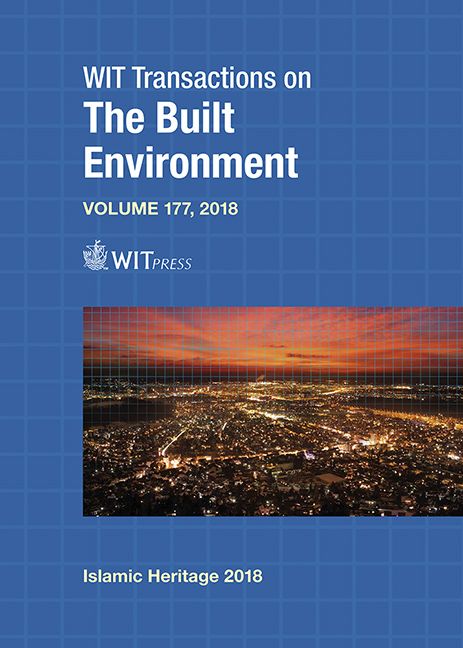ANALYSIS OF THE ARCHITECTURAL PLAN OF OTTOMAN MOSQUES IN ALAHSA KUT, KINGDOM OF SAUDI ARABIA IN THE 10TH CENTURY AH/16 AD MOSQUE OF ALFATIH (ALDIBS), MOSQUE OF ALQOUBA
Price
Free (open access)
Transaction
Volume
177
Pages
30
Page Range
87 - 116
Published
2018
Size
1,924 kb
Paper DOI
10.2495/IHA180081
Copyright
WIT Press
Author(s)
ALJOHARA ALMUDARRA, ABDULLAH ALHADDAD, ALJOHARA ALSADOUN
Abstract
Saudi Arabia is blessed with the existence of the two Holy Mosques and the spread of Mosques. Our national heritage is full of these historic Mosques, particularly Al-Hofuf City in Al-Ahsa. The searcher of the ruins of the area must be captured by the magnificence of buildings constructed by the Ottomans in the (10th AH/ 16th AD) centuries, which led us to study the Ottoman impact in the architecture of Mosques, and how architecture could overcome the difficulties and reconcile between the planning of Ottoman architecture and building materials in local environment. We had to study documents and root of this architecture, especially after the demolition of some of them, and others are on the point of destruction. The study aimed at shedding light on the most important and oldest Ottoman Mosques in Al-Kut, namely Al-Qouba and Al-Fatih Mosques, as a model for the architecture of old Mosques, as well as highlighting their functions, planning and model their architecture, characteristics, decorative architectural elements, and ways to build them to tell a story of the fragrance of the past and the depth of our traditional heritage. In this study, we applied several methods. We first used an inductive method to collect all related research materials from books to articles and oral interviews. Next, a descriptive method is utilized to further describe Al-Fatih and Al-Qouba Mosques and determine the outline of their architecture and patterns, including their roles after the field visit. Then we implement a comparative analytic method to analyse the architectural planning of the two Mosques and their structural elements, and therefore, comparing these two Mosques architecture to identify the similarities and differences between them to derive their cultural implications and local and incoming influences. We hope that our research is of scientific benefit and a crucial source of architectural knowledge for researchers.
Keywords
analysis of the architectural planning of Ottoman, Mosques in Kut Al-Ahsa, Mosques 10th century AH in Kut Al-Ahsa, Mosques 16th century AD in Kut Al-Ahsa, Al-Qouba Mosque, Al-Fatih Mosque, Al-Dibs in Kut Al-Ahsa




